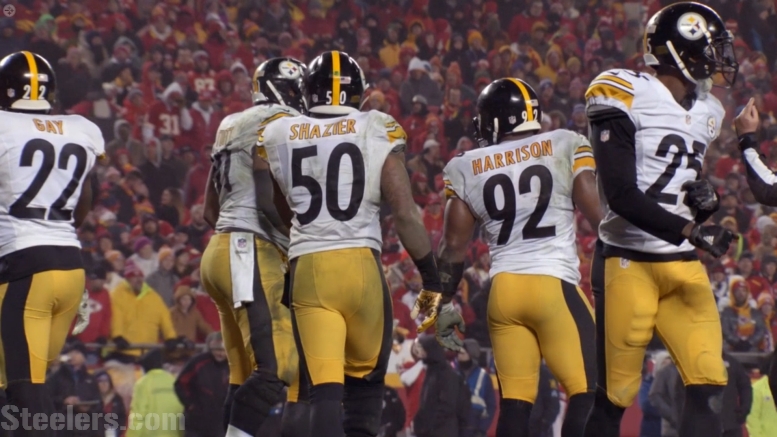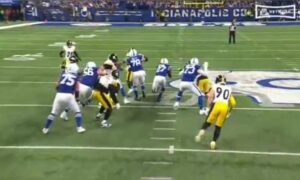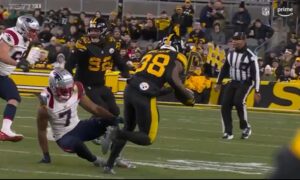There is no shortage of valid reasons to complain about the Pittsburgh Steelers’ game today, most of which focuses directly on their play, even if some dubious non-calls by the officials ended up playing a critical role in the final outcome of the game. But the most egregious issue throughout the day was, quite simply, the shockingly bad run defense.
As a team, the Bears put up 220 rushing yards on 38 carries, averaging 5.8 yards per carry, and that is in spite of the fact that the Steelers made no fewer than six tackles for losses during the game, for a total of 18 yards.
So let’s do a very quick dive into just how bad the performance was, just from a statistical perspective. The Bears had nine runs that went for at least 10 yards, with two carries going for 20 or more yards. Both of them came courtesy of rookie Tarik Cohen.
In the middle of the second quarter, the diminutive running back was able to break free from the Bears’ 42-yard line, rattling of a 26-yard gain off left tackle to put them in field goal range. Six plays later, they scored their second touchdown of the game.
The other one was arguably the biggest play of the game, and certainly the (second-)most controversial, that being the long 36-yard gain in overtime. It was second and nine at their own 27-yard line when he was able to cut back upfield and race up the right sideline.
As I already talked about earlier in our post-game coverage, the run was greatly aided by a hold that was not penalized that enabled the running back to get to the outside, but it could have been even worse, had the officials not ruled that he stepped out of bounds at the 37-yard line.
Not that it proved to matter, because the run defense proceeded to give up long runs of 18 and then 19 yards immediately in the aftermath, the latter providing the game-winning walkoff touchdown that prevented the Steelers’ offense from seeing the ball in extra time—albeit, again, a hold that was not called factoring in to the success of the latter.
The Bears gained 73 yards on the ground over just those three plays, a fact made only more dreadful by the reality that the Steelers had two opportunities in the final five minutes of regulation to author a game-winning drive during a 17-17 tie score.
Unfortunately, I do not think that there is one issue, but many, when it comes to evaluating what went wrong with the run defense on this days. Missed tackles were an important contributor, as were poor or missed run fits leaving gaps open.
But the defensive front seven in general also simply did not win enough of their battles, and Jordan Howard, despite exiting twice with a shoulder injury, made them look bad. Further evaluation will be required to really get some answers as to why the run defense was so incredibly bad, but the eye test—and the stat sheet—suggest that there won’t be a surprise silver lining.








